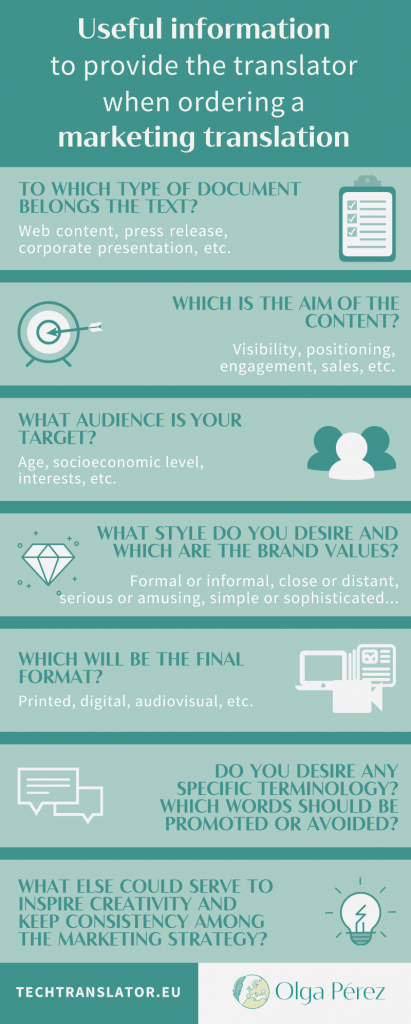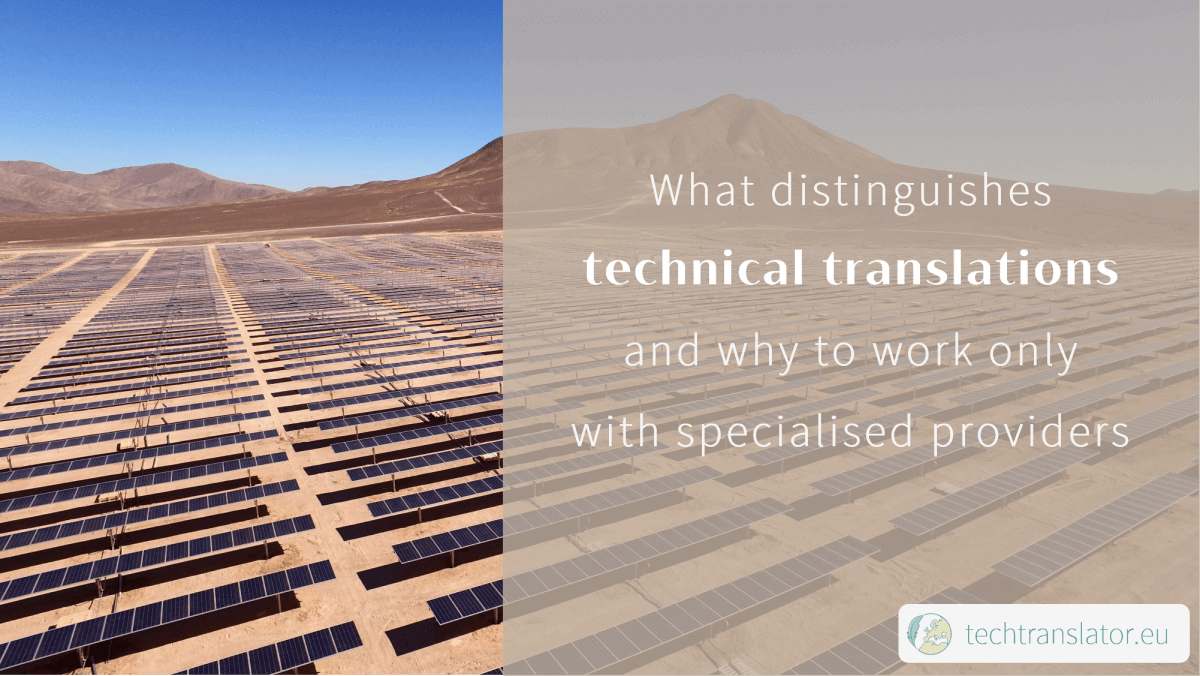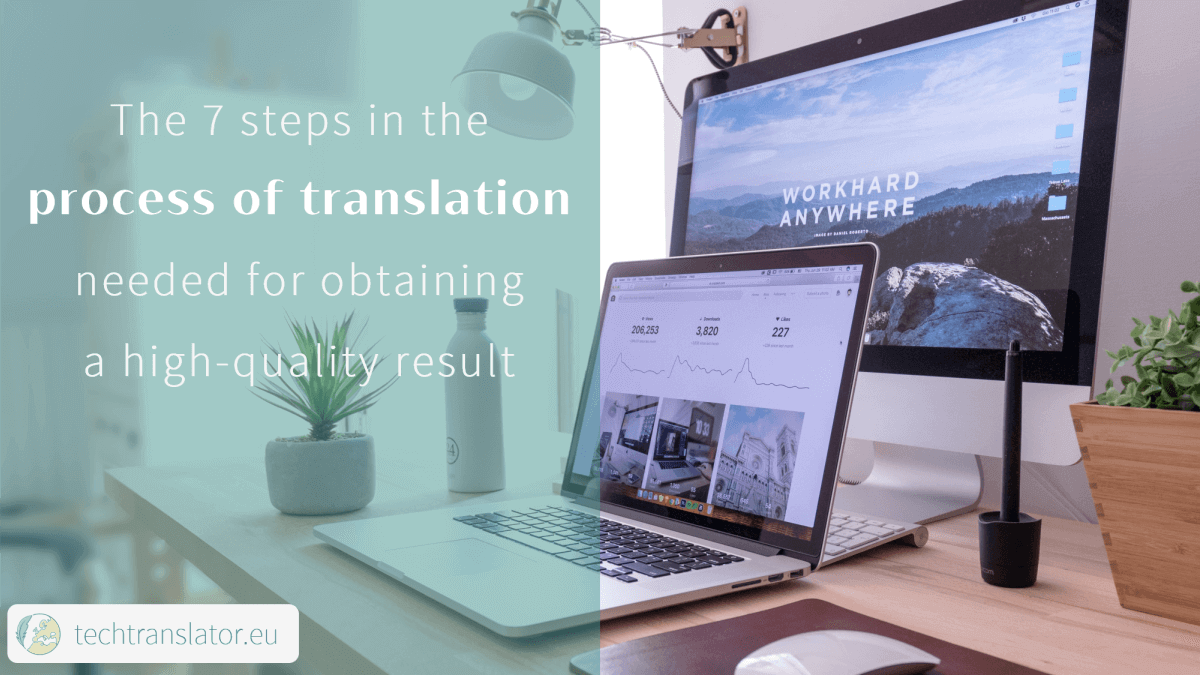The translation specialised in marketing plays an important role within business translation because it enables the successful internationalisation of companies. Thanks to it, you can optimise the communication with your customers.
However, to achieve the best result and ensure that the texts are as effective as they were in the home market, it’s necessary to take into account the specific characteristics of marketing translation services. Therefore, not every translator would be able to help you.


Photo by Kate Trysh on Unsplash
Content index
Types of marketing documents
At enterprise level, marketing embrace a broad range of texts, mainly with an informative or promotional character. Among the documents that marketing translation covers, are:
- Product catalogues
- Promotional brochures
- Advertisements (for internet, television, press, radio, signage, etc.)
- Corporate websites
- Blog posts
- Business presentations
- Press releases
- Promotional video scripts
- Communications and e-mails
- Packaging and labelling
- Posts on social media
- Newsletters
As you can see, there is a great diversity and each document requires a specific adaptation. Let’s see some common aspects that must be considered to ensure a positive reception in the Spanish market.
The aim of the marketing text
In marketing translation, taking into account the aim of your text is key. That’s because, even if the ultimate goal is selling, some of your documents have other purposes, such as brand visibility, market positioning, public engagement, or revealing the characteristics of a new product. As you well know, marketing is essential for the commercial success of any business.
Knowing the goal is crucial to be able to adapt and convey your message to the new audience. Only thus can be effective in the target market as well. Therefore, we apply also copywriting technics. It’s the way to get a more persuasive text and increased sales. Especially in advertisements, landing pages and CTAs (call to actions), like in purchase or contact buttons.
Connecting with the audience
To achieve an attractive and effective message, it’s necessary to connect with the audience and appeal to it. That’s not easy. It requires a good knowledge of the target market, culture, and audience. The translator must be a native in order to tailor your message to convey the same emotions, feelings, and reactions as in the original language, for example:
- Provocation
- Surprise
- Curiosity
- Desire
- Interest
Cultural references, metaphors and word games are often used and should not be translated literally, but transformed for trying to achieve the same effect. This cultural adaptation is called localisation.
Most important is avoiding the presence of elements that could be offensive or lead to misunderstandings (bearing in mind cultural, religious, or political sensitivities, as well as images and symbols). Therefore, although a correct marketing translation doesn’t guarantee success, a bad translation of the message can lead you to a failure. In this image you can see examples of real advertisements with failures found on the Internet:


A question mark is missing, an accent is incorrect, there are punctuation errors, the CTA is wrongly translated… For sure, a professional translation of these advertisements would have achieved a significantly higher conversion rate. Don’t you think?
Style of marketing content
Of course, the style must suit the target audience according to its age, socioeconomic level, interests, etc. and a tone aligned to your brand values.
To achieve this, sometimes it’s necessary to skip the norms and linguistic recommendations and, for example (when translating from English to Spanish), use capital letters for emphasis or anglicisms, which may be relevant for improving SEO when used as keywords, like in my previous post, where I used “freelance” also in the Spanish version.
In general, a marketing text should be:
- Clear: understandable and unambiguous.
- Direct: exposing the most relevant information as concise as possible.
- Simple: without technicalities that could make it difficult to understand.
- Convincing: without exaggerations or lies about the product characteristics or its benefits.
These attributes should be maintained when translating your text. You have dedicated many resources in developing the original marketing campaign and I’m sure you don’t want a bad adaptation that could damage your image in the Spanish market.
The translator specialised in marketing
In addition to knowing the market, mastering the target language and a thorough analysis of the product and the brand, specialised marketing translators know marketing strategies to get better results.
In my case, I was part of the Marketing & Sales department during the 4 years I worked as a Product Application Engineer for a German multinational company. Additionally, I collaborated with a Spanish marketing agency in international online and offline campaigns, mainly in the UK and Germany. These are some marketing projects I worked on:
Format of marketing texts
As we have seen in the great diversity of document types, marketing texts are at many different supports. This also affects the translation process since it requires an adaptation, for instance, when the space is limited or if the text forms part of images.
It’s clear that, depending on the format, there’s a significant difference when working, for example, on the following:
- Promotional posters and brochures: need to care especially the final version to avoid detecting failures after the printing process.
- Mobile apps and websites: need to take into account the user experience and SEO.
- Posts on social media: need to consider the limitation of characters in each platform.
- Corporate videos and audios: need to bear in mind the duration and if the synchronisation of the text with other audiovisual elements is necessary.
Specific terminology in marketing translations
Even if, in general, marketing content is usually not technical, we have to take important decisions about the terminology. Knowing the project well allows us to make specific adaptations such as promoting words that form part of the brand voice, using or avoiding anglicisms, and applying the terminology that you prefer (whether you are the final client or a marketing agency).
In some cases, such as product documentation, technicalities, and technical terminology are frequent so using glossaries or terminology lists is especially recommended. If you don’t have these documents yet, I’ll compile them and apply the specific terminology to all your business documentation.
Creativity in marketing
To successfully bring all these elements together, creativity is a must. Marketing pursues memorable messages, so we try to capture the attention of the audience with originality. The goal is to achieve differentiation to stand out from the crowd.
Marketing translation is sometimes called transcreation because it combines translation and creation. It’s also called creative translation, since it doesn’t try to reproduce the original text, but to adapt the content to secure that the message causes the same reaction in the target audience. Thus, playing with words and letting the imagination fly and often using specific cultural or social elements.
Marketing translation is creative, since it doesn’t try to reproduce the original text, but to secure that the message causes the same reaction in the target audience. Click to tweetRelevance of consistency in marketing translation services
Marketing texts are usually part of a global marketing strategy in the medium to long term. Consistency among the different messages published in the diverse channels is crucial. Your campaign consists of several actions and their texts must be in harmony. It would not be professional, for example, addressing the audience with a formal tone in some contents and an informal tone in others (unless if it’s your strategical decision). In addition, the messages should also be consistent with your brand’s values and positioning to generate a positive brand perception.


As you can imagine, in order to bear in mind all these aspects and making the text as effective as possible, it’s indispensable to provide this information and the relevant reference material (including images) when you order marketing translation services.
Were you aware of all the elements that have to be considered when performing a marketing translation? Is there any other relevant factor that you may add? See you in the comments area!
If you want to expand your business into the Spanish market or work on international marketing campaigns and would like to work with me for translating your marketing content from English and/or German into Spanish, feel free to contact me. I can help you to bring your message naturally to your audience in Spain.
Did you find this post interesting? You can share it directly from here:


Technical Translator specialised in Marketing, Economics and Environment. I hold an MSc. in Environmental Engineering and enjoy contributing to the expansion of sustainable businesses in the Spanish market with accurate translations, and clear and natural texts.








